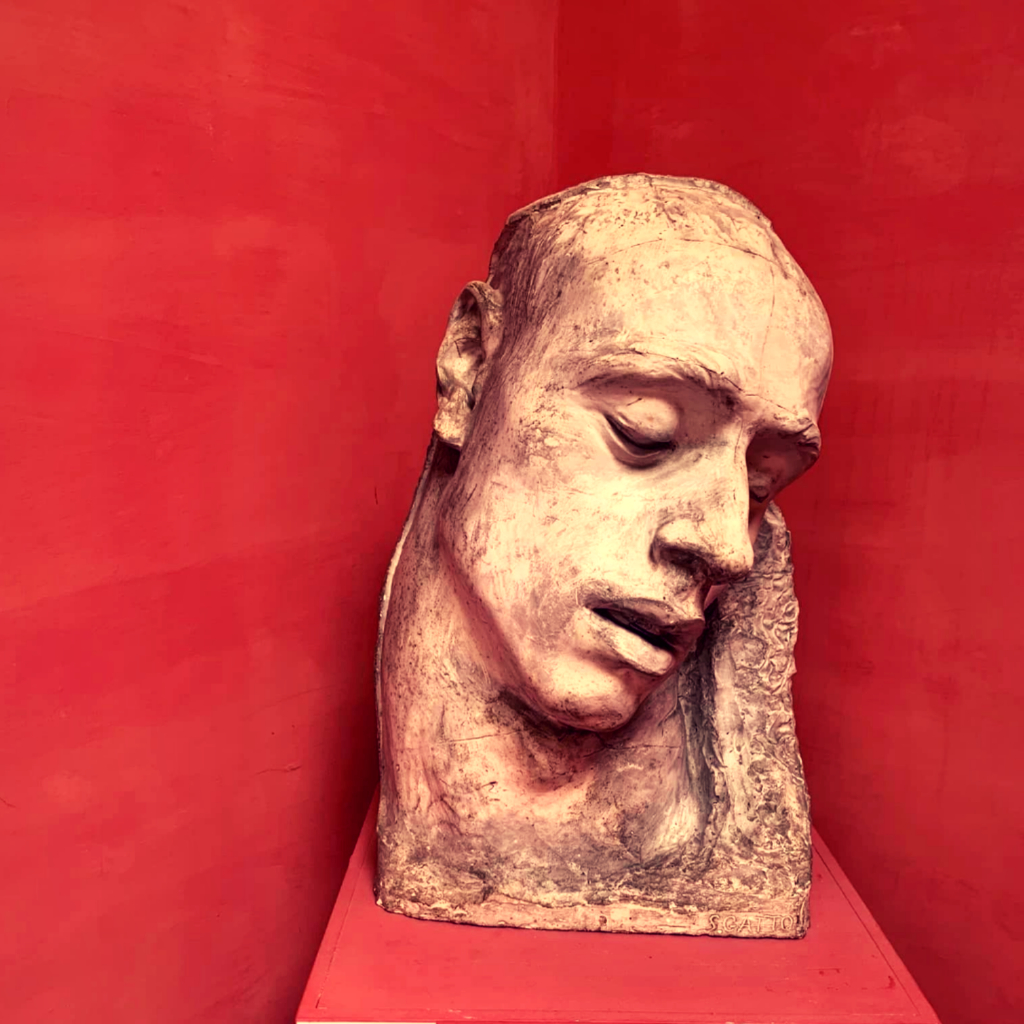Cases of pure comic genius are rare enough without us forgetting or overlooking any of them, so it is particularly important that more people discover, and enjoy, Gerard Hoffnung’s brilliant creativity.
Hoffnung does not appear to be remembered by many these days, and of those who do still remember him, most of them do so more for either his unconventional musical activities. The whole range of his work deserves reviving, however, because, at a time when true non-conformists seem so hard to find, the brief but bright career of Gerard Hoffnung is as refreshing as it is enlightening.
“He had so much humour in him,” his wife, Annetta would later say. “We used to travel by bus, and he would sit opposite me and he would try and make me laugh. I’d take no notice of him and then suddenly he would do a big twitch, or he could roll one of his eyes in a circle without the other one moving. And he would sit there looking terribly vacant while rolling this eye. And I’d try not to take any notice of him but he was so funny, and in the end I’d be laughing. But I wouldn’t sit in front of him if I could possibly help it!”

Hoffnung first made an impact as a cartoonist. Drawing mainly with a mapping pen and Indian ink, his clear and crisp comic images, which usually featured endearingly flawed-looking little human beings baffled in some or other way by mechanical objects, were published in the UK by the likes of Punch, The Strand Magazine and The Tatler, as well as numerous other newspapers and magazines in the US and countless other countries.
It was initially through his cartoons that he expressed his passion for music (“I love music to the point where it eats me”). In 1953 he published The Maestro, the first in a series of six books of comic illustrations on musical themes, which sold over 250,000 copies and further enhanced his fame.
Always driven by a desire to convert others to the magic of music – his wife once came home to find a rag-and-bone man’s horse and cart tied up outside the house, and a somewhat bemused rag-and-bone man inside sitting on a couch while an excited Hoffnung, with a baton in his hand, hovered over him and ‘conducted’ a recording of Stravinsky’s The Rite of Spring – he used humour more and more to stifle any stuffiness. By the time that his third book – The Hoffnung Music Festival – was published in 1956, plans were well underway to translate his drawings into a full-length live concert (‘a serious attempt,’ as he put it, ‘to combine music and humour’).
After securing the Royal Festival Hall as a venue, Hoffnung commissioned six British composers to write new and suitably unconventional pieces for the event, promising that it would be ‘a caricature symphony concert of immense proportions,’ and ‘an explosion of musical exuberance such as London has never heard before’. Tickets sold out in less than two hours (breaking all records for the Royal Festival Hall at that time), the BBC agreed to televise it, and the impact was impressive.
One of the most ear-catching compositions for the concert was Malcolm Arnold’s Grand, Grand Overture – a piece scored for three vacuum cleaners (one upright in B Flat and a horizontal with detachable sucker in C), an electric floor polisher (in G), four rifles and a full orchestra. The score was dedicated, of course, to President Hoover.
Other highlights included the British virtuoso horn player Dennis Brain performing one movement of a concerto by Mozart’s father on a mouthpiece, hosepipe and funnel, a Chopin mazurka re-arranged as a tuba quartet, and a fierce battle between an orchestra playing Tchaikowsky’s Piano Concerto No 1 and a pianist persisting with Grieg’s Piano Concerto. Not all of the reviewers enjoyed it (‘I have heard less horrible grunting on a farm’ moaned one classical critic), but most did. “Its overwhelming success”, wrote one about the festival as a whole, “does suggest that our present-day musical public is eager for a chance to laugh at its own foibles.”


